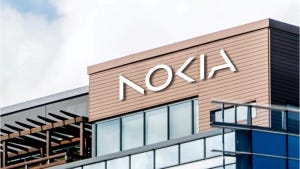The Road to Zero Load, Zero Carbon for Mobile Networks
In 1896 Svante Arrhenius published the first calculations of how much global surface temperatures would rise due to the eventual doubling of atmospheric carbon dioxide (CO2) compared to preindustrial levels.
November 14, 2022

In 1896 Svante Arrhenius published the first calculations of how much global surface temperatures would rise due to the eventual doubling of atmospheric carbon dioxide (CO2) compared to preindustrial levels. His estimate of 4° Celsius is remarkably close to the most modern estimates of 2.6 to 3.9° C.
As politicians meet this month for the UN’s climate change conference, COP 27, they will discuss what actions their countries are taking to reduce CO2 emissions and combat climate change. The obligations that these states undertake are ultimately passed on to the corporate sector via legislation.
Of the various corporate sectors, telecom is a leader in the drive to reduce carbon emissions. Many operators are already sourcing a large proportion of their electricity from renewables. In addition, they are striving to reduce their energy consumption. In fixed networks they are doing this by moving from copper-based to less power-hungry optical fiber-based access. In the mobile domain the energy savings mainly relate to the radio access network (RAN).
Energy costs are squeezing operators
Telcos’ efforts to reduce energy usage are not solely to reduce their carbon footprints. It also makes economic sense. According to the International Energy Agency , wholesale electricity prices rose significantly in many countries in the first half of 2022. In many European markets, wholesale power prices in the first half of 2022 were more than three times higher than the average over the previous six years. These rising costs, primarily due to a shortage of natural gas, are starting to impact the financial results of telcos.
In July, Vodafone indicated it may have to raise prices to cope with rising electricity bills. And in September, Telenor warned that rising electricity prices would make it difficult to meet its profit target for the year.
Rising electricity prices are not confined to Europe. In November, Japanese operator Softbank warned that its energy bill was starting to squeeze profits. To mitigate the impact, the operator said it was introducing energy-efficient equipment into the network and would try to cut electricity consumption by powering down basestations during periods of low-traffic.
Extending the energy savings of sleep mode
Powering down a basestation at night is not as straightforward as it might sound. A recent whitepaper by China Telecom and ZTE, Remake Green 5G , examines deep sleep mode alongside several other energy-saving and efficiency-enhancing technologies for mobile networks.
Within the RAN, the Active Antenna Unit (AAU) is a highly integrated, complex, and power-hungry item of equipment. Its energy-hungry parts include multiple power amplifiers (PAs), digital and analog chipsets for baseband, digital intermediate frequency (IF) chips, and transceivers. Unlike general-purpose processors, the power consumption of the highly specialized AAU chipsets does not fluctuate much with traffic load variation. As a result, without any power-saving feature, the minimum power consumption of the AAUs (when there is no traffic) is still around half the peak power consumption.
The AAU can be placed into a deep sleep mode at times when the operator is confident it will not need to be restarted for some time (e.g., 2am to 4am). In deep sleep mode the PAs of the AAU are completely powered down along with the low noise amplifiers (for received signals), and transceivers. This can reduce the power to around 15% of peak load. The residual energy is consumed by the fronthaul interface and the AAU’s power control module.
The fronthaul interface, enhanced Common Public Radio Interface (eCPRI), connects the AAU with the baseband unit (BBU) where the signals are processed. The BBU is located at a centralized hub, not the cellsite. This connection is normally kept awake so that the AAU remains visible to the RAN management systems and to ensure the rest of the AAU can be woken from its deep sleep at the appropriate time.
In the Remake Green 5G paper, the authors present an enhanced form of deep sleep they call AAU hibernation. This approach enables the eCPRI module to be turned off and hence reduces the power consumption of the AAU further. It still needs electricity for the power control module since this is responsible for waking the system once the configured time window expires. However, the power consumption is less than 5% of that of the AAU in basic deep sleep mode.
In tests with China Telecom in Chengdu , ZTE verified that the AAU hibernation feature increased the energy saving potential of its PowerPilot solution (which includes features such as cloud platform power saving, intelligent base station power saving, carrier shutdown, channel shutdown, symbol shutdown and basic deep sleep) from 27% to 35%.
The Remake Green 5G paper goes on to explain that significant thought must be put into semiconductor design, printed circuit board layout and the software of the AAU to ensure the rapid temperature changes and electrical charge flows associated with a sudden transition to deep sleep do not reduce the reliability of the AAU. Other techniques explored in the paper include millisecond-level voltage adjustments of PAs to improve their energy efficiency.
The paper also highlights work that took place in the TM Forum Catalyst Project, 5G Greener Telco , which was given the award for the Impact for Society in 2020. The project was championed by China Telecom and supported by several technology companies including AsiaInfo, BOCO Inter-Telecom, and ZTE.
Zero load, zero carbon – a goal for 6G
With mobile network traffic loads continuing to rise and energy costs likely to remain high for the foreseeable future, energy efficiency is a strategic priority for operators. As standards setters begin to define the next generation of mobile technology one important target is "zero load, zero carbon", i.e., reducing the energy consumption of the network to a minimum during quiet periods. This not only makes good financial sense (given the cost of electricity) but also helps to reduce the carbon footprint of the telcos, enabling them to meet their obligations as good corporate citizens.
"Zero load, zero carbon" will require the integration of energy saving and emission reduction concepts in system design, technology innovation, product design, network operation and maintenance. This will pose significant technical challenges for the RAN technology community but should ultimately bring important benefits to telecom operators and society at large.
Authors: Roberto Kompany, Principal Analyst, Mobile Networks; James Crawshaw, Practice Leader, Service Provider Transformation
You May Also Like










